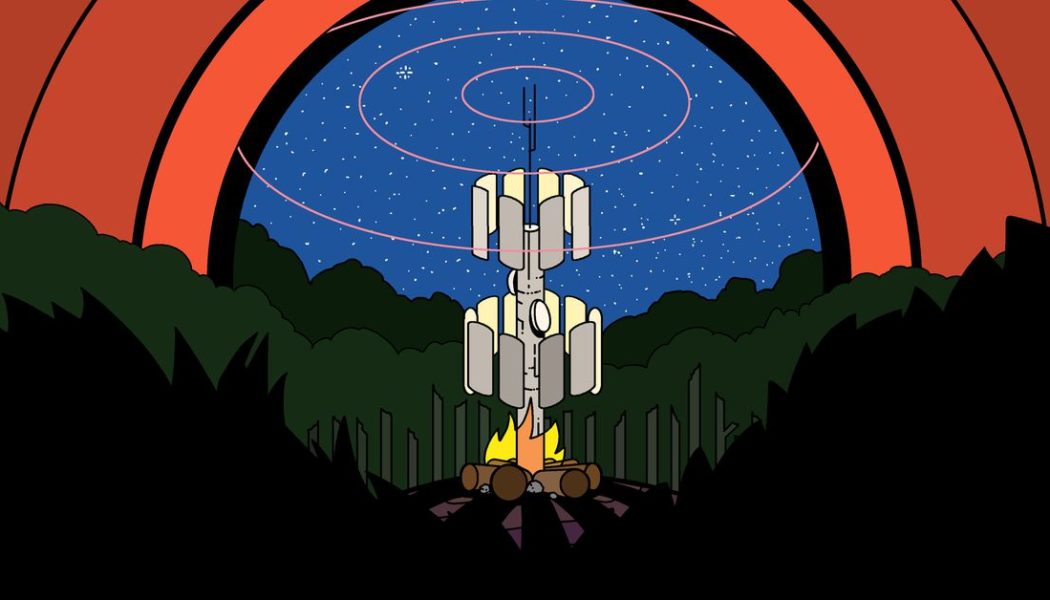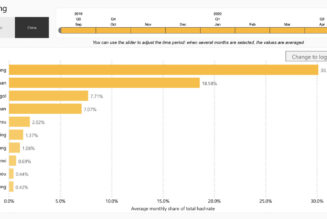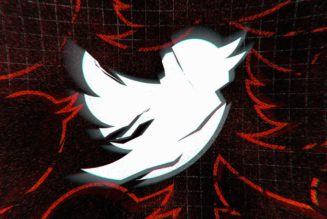
At the height of the COVID-19 pandemic lockdown last year, with most indoor activities canceled, Crystal C’Bearing did what many others did: she went outside. C’Bearing and her family explored the beautiful mountains and rivers that surround their home on the Wind River Reservation in Wyoming. C’Bearing, who is the deputy director of the Northern Arapaho Tribal Historic Preservation Office (THPO), says she loved how many other families were also out enjoying the land. But from a cultural resource protection standpoint, she had concerns about people posting on social media about stone circles, petroglyphs, or other protected sites they found.
“People see these things on social media and they want to come see it for themselves,” she explains. “They don’t realize the dynamics of the reservation and that we have our own laws and regulations that you need to follow.”
C’Bearing’s experience illustrates a growing challenge for Indigenous communities: how to protect tribal culture from the dangers of the attention economy. Non-Indigenous users often do not understand that the way they consume content on social media can pose a threat to Indigenous culture — and for tribes that have been fighting against cultural eradication for generations, the stakes of what gets shared online couldn’t be higher.
For C’Bearing, the damage done by the photos is tangible. Non-tribal hunters and fishers came to the landmark sites in unprecedented numbers, using motorized boats on reservation lakes and fishing in areas that are prohibited for religious or ecological reasons. Private planes chased animal herds from tribal land to private or state land — an explicit violation of tribal sovereignty and law. Where the tribe put up signs about prohibited behavior, trespassers tore them down.
“We have these signs all over, they’re usually shot up, or taken down, or vandalized somehow,” C’Bearing says. “That’s what we face.”
Decisions about privacy and security are complex for any community. On the Wind River Reservation, however, developing these policies means confronting a uniquely complicated history. Tribal reservations like Wind River are governed by sovereign Indigenous nations like the Northern Arapaho. There is a wide network of agencies, departments, and leaders that have input on reservation policy. The Northern Arapaho share the reservation with the Eastern Shoshone, who have their own Tribal Historic Preservation Office. Both THPOs would also likely have to work with other branches of tribal government and the Bureau of Indian Affairs. This bureaucratic complexity is due in part to policies that worked to eliminate tribal nations.
Another challenge is enforcement. The sheer size of the Wind River Reservation, which covers over 2 million acres (roughly three times the size of Rhode Island) and includes two mountain ranges, makes it difficult for the tribal fish and game department. For this vast area, the tribe currently only has five game wardens.
The result has made some members less comfortable exploring their own land, knowing that an aggressive group of outsiders might already be camped out there. “There’s not many tribal members using those areas and that’s what it’s meant for,” she says. “And it’s just disturbing to me because I wish more of our tribal members were out there instead of non-tribal members.”
To reduce these infractions, C’Bearing is pushing for increased signage, greater enforcement capacity for tribal game wardens, and a stricter permitting process that would limit visitors to people who actually intend to hunt or fish in a respectful and legal way, rather than poachers or people just trying to find a cool cultural site they saw on a Facebook post. All of these initiatives will require support and investment from tribal government.
For now, the administration has implored individual citizens to take photos of anyone they see violating reservation law — but it’s an informal system, and C’Bearing says it’s overmatched by the torrent of outsiders over the past year. C’Bearing has also been encouraging individual tribal members to contact her office directly rather than posting publicly on social media, leading to Facebook messages warning of endangered fossil areas or problematic posts.
“All it takes is one person,” C’Bearing says, for a seemingly harmless Facebook post to turn into a threat to the reservation.
The question of exploitation is especially urgent on social media, says Amanda Cheromiah, Laguna Pueblo and the director of the Native SOAR mentorship program at the University of Arizona. Cheromiah sees social media platforms as a powerful way to preserve Indigenous culture because of how quickly a post can go viral and spread to Indigenous people anywhere in the world. Of course, that virality comes with the risk of non-Indigenous people abusing it — Cheromiah has seen non-Indigenous kids mimicking Pueblo dances they saw on TikTok, imitations that often play on stereotypes or strip the dances of important cultural context.
“These things are becoming more accessible, but it shouldn’t come at the cost of non-Natives exploiting Indigenous people again,” she says.
Cheromiah is an active TikTok user, posting about Indigenous life, as well as informational videos for Indigenous students and non-Indigenous people who might want to learn about Indigenous culture. Cheromiah has nearly 20,000 followers on the platform and her videos regularly get tens of thousands of views. Balancing access and knowledge with protecting culture and tradition is a constant battle, but the key, Cheromiah tells The Verge, is giving Indigenous people space to express themselves and let them decide what can be shared and when. “Let’s increase our digital imprint the way we want to do it,” she says.
It’s part of a larger anxiety in tribal communities, who are also in the midst of digitizing a vast store of cultural knowledge. As archivists strive to make materials more accessible, they also worry about them losing cultural context in the digital world. Donovan Pete, the acting program supervisor at the Navajo Nation Library, tries to make some materials available online while reserving others for in-person use. These restrictions help reduce the risk of duplication and exploitation, but also reflect Pete’s embrace of a more traditional, community-based way of learning.
“There’s a part where we do have an emphasis to be able to have language and culture out there, but not too much, because we’d rather have individuals come back home and be able to experience it themselves,” Pete says.
Pete is trying to envision a library system based on Navajo culture and traditions, rather than an American model. These efforts reflect the reality that, for most Indigenous communities, protecting culture isn’t as simple as restricting access to library materials. Part of the challenge is the extent to which Indigenous language and culture permeates all aspects of tribal life and politics.
Tribal elders, in particular, have been victimized by outsiders, leading many Indigenous communities to take extra precautions when digitizing their knowledge. “A lot of concern with elders is somebody taking their knowledge and profiting off of it and not coming back and helping the reservation,” C’Bearing says. “It’s happened before.”









